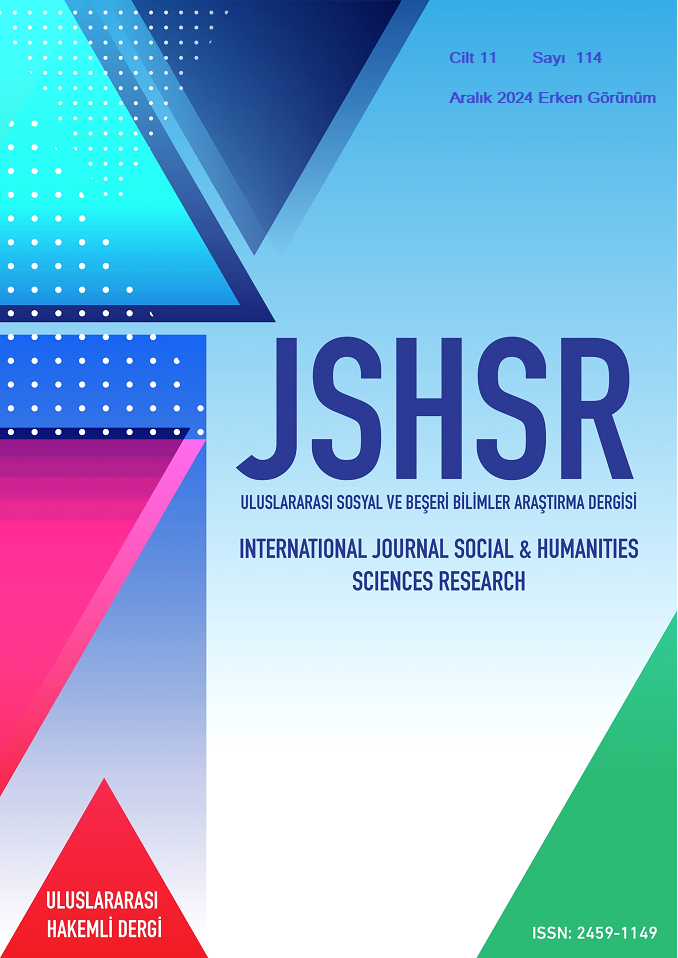The Musical and the Philosophical Analysis of the Opera Tristan and Isolde by Wagner
DOI:
https://doi.org/10.5281/zenodo.14585138Anahtar Kelimeler:
Wagner, Tristan ve Isolde, Opera, Leitmotif, SchopenhauerÖzet
German composer, theorist, conductor Wagner invented a structure of continuous narrative flow, which is different than the traditional and conventional opera structure. He had a strong influence on the musical world lasting for at least one century. His fascinating opera Tristan and Isolde is one of the most interesting and loved ones in music history. In this opera, everything is symbolic and works for the mythic world that Wagner created. The opera is based on a medieval Celtic legend about a romantic tragedy of love and death told by an exceptional music. Wagner, being under the influence of Buddhism via Schopenhauer, composed the opera using the poetry of Gottfried von Strassburg, and touching subjects such as karma, enlightenment, desire, compassion, love and death. Although the use of symbolism and mythology contributes to the feeling of a distant sense from reality, Wagner thinks that it is the most intimate way of mentioning humanity. He mixes elements from different philosophies, religions and beliefs, making his work difficult to understand for an audience without the proper philosophical background and knowledge. The symbolism of day and night at Tristan and Isolde breaks the tradition of seeing day as positive representing life and hope, and night as negative representing death and decay according to the tradition in Western literature, and thus surprises the audience. In this study, this opera is evaluated musically and philosophically, with the perspective of well-known philosopher Schopenhauer especially. Musical terms such as leitmotif, suspension, dissonance and Tristan chord are examined. The contribution of these musical terms and philosophy to making Wagner's opera Tristan and Isolde one of the most important works in the history of music is emphasized.
Referanslar
Bergstein, M. (2013). The wish for annihilation in ‘love–death’ as collapse of the need for recognition, in Wagner’s Tristan und Isolde. The International Journal of Psychoanalysis, 94(4), 747–766. https://doi.org/10.1111/1745-8315.12056.
Brenner, M. (2021). Dopamine, Richard Wagner, and the love death. https://manuel-brenner.medium.com/dopamine-richard-wagner-and-the-love-death-517b83e6d349
Britannica. (2024). Richard Wagner. https://www.britannica.com/biography/Richard-Wagner-German-composer.
Chafe, E. T. (2005). The Tragic and the Ecstatic: The musical revolution of Wagner's Tristan and Isolde. Oxford University Press.
English National Opera. (n.d.). Discover Tristan and Isolde. https://www.eno.org/operas/tristan-and-isolde/
English National Opera (n.d.). Wagner’s most famous music: where to start. https://www.eno.org/discover-opera/explore-more/wagners-most-famous-music-where-to-start/
Groos, A. (2011). Richard Wagner: Tristan und Isolde. Cambridge University Press.
Henken, J. (2024). Tristan and Isolde. Los Angeles Philharmonic Association. https://www.laphil.com/musicdb/pieces/4373/tristan-and-isolde
Jiménez, L. (2016). "Tristan and Isolde. Death by Rogelio de Egusquiza" (PDF). Bilbao Fine Arts Museum. https://bilbaomuseoa.eus/uploads/salas_lecturas/archivo_in-76.pdf
Kettle, M. (2020). Wagner: Where to start with his music. The Guardian, https://www.theguardian.com/music/2020/aug/12/wagner-where-to-start-with-his-music
Magee, B. (1983). The Philosophy of Schopenhauer. Oxford University Press. ISBN 978-0-19-824673-2.
Magee, B. (2001). The Tristan chord: Wagner and philosophy. Metropolitan Books. ISBN 978-0-8050-6788-0.
Metropolitan Opera. (n.d.). Synopsis: Tristan und Isolde. https://www.metopera.org/user-information/synopses-archive/tristan-und-isolde
Millington, B. (1992). The Wagner compendium: A guide to Wagner's life and music. Thames & Hudson. ISBN 978-0-500-28274-8.
Polka, B. (2013). Liebestod: On love and death in Wagner’s “Tristan und Isolde.” International Review of the Aesthetics and Sociology of Music, 44(2), 239–252. http://www.jstor.org/stable/23594799
UDiscover. (2024). Best Wagner Works: 10 Essential pieces by the great composer. https://www.udiscovermusic.com/classical-features/best-wagner-works-10-essential-pieces/
Wang, Z. (n.d.). Tristan, buddhism, and Schopenhauer. https://earthandjerry.com/w
Weitz, G. (2003). Love and death in Wagner's Tristan und Isolde - An epic anticholinergic crisis. BMJ, 327(7429), 1469-1471. doi:10.1136/bmj.327.7429.1469
İndir
Yayınlanmış
Nasıl Atıf Yapılır
Sayı
Bölüm
Lisans
Telif Hakkı (c) 2024 International Journal of Social and Humanities Sciences Research (JSHSR)

Bu çalışma Creative Commons Attribution 4.0 International License ile lisanslanmıştır.


